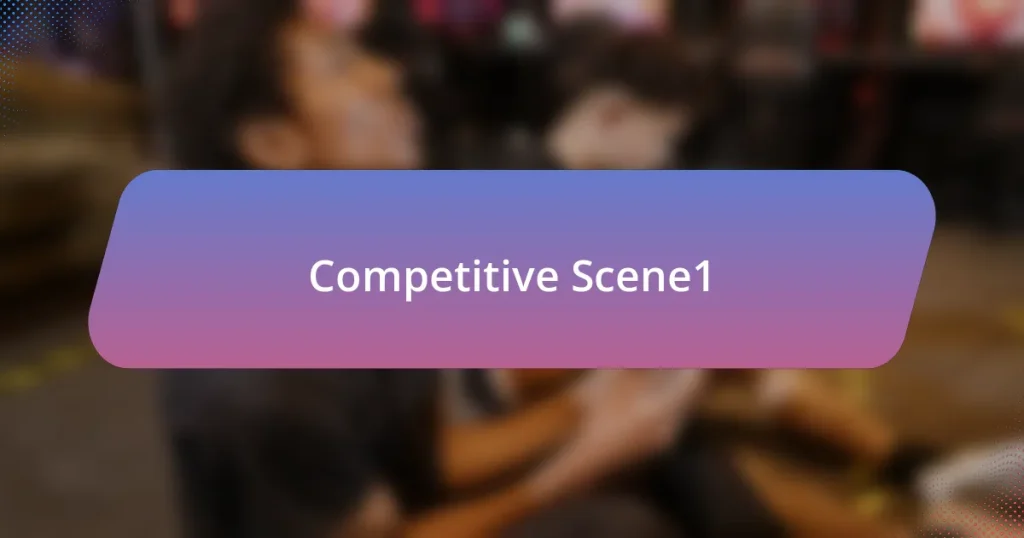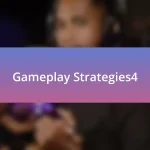The article examines the evolution of competitive strategies in Dota 2, highlighting key milestones such as the establishment of the meta, the rise of defined player roles, and adaptations to game patches. It discusses how early competitive scenes shaped gameplay mechanics and team compositions, emphasizing the importance of coordination and synergy. The article also analyzes dominant strategies from the initial years, the impact of major tournaments on strategy development, and the ongoing trends in hero selection and drafting strategies. Additionally, it explores how player roles have evolved, the significance of hero diversity, and best practices for teams to remain competitive in the dynamic landscape of Dota 2.

What are the key milestones in the evolution of Dota 2 competitive strategies?
The key milestones in the evolution of Dota 2 competitive strategies include the introduction of the meta, the rise of specific roles, and the adaptation to patches. Initially, the meta defined the most effective strategies, such as the “push” strategy prevalent in early tournaments like The International 2013. The establishment of defined roles, such as carry, support, and offlaner, became prominent around 2014, allowing teams to specialize and optimize their gameplay. Furthermore, the continuous adaptation to game patches, particularly after significant updates like the 7.00 patch in 2016, reshaped strategies by altering hero abilities and itemization, leading to innovative approaches like the “4 Protect 1” strategy. These milestones collectively illustrate the dynamic nature of competitive strategies in Dota 2, driven by both player innovation and game development.
How did the early competitive scene shape Dota 2 strategies?
The early competitive scene significantly shaped Dota 2 strategies by establishing foundational gameplay mechanics and team compositions that prioritized coordination and synergy. Teams like Natus Vincere and Evil Geniuses pioneered strategies that emphasized hero combinations and roles, leading to the development of meta-game concepts such as “drafting” and “counter-picking.” These strategies were influenced by the need for effective communication and teamwork, as seen in the 2011 International, where Na’Vi’s use of the “Dendi Pudge” became iconic, showcasing the importance of individual skill within a team framework. The competitive environment also encouraged experimentation with diverse hero picks and strategies, which ultimately led to a more dynamic and evolving meta in subsequent tournaments.
What were the dominant strategies in the initial years of Dota 2?
In the initial years of Dota 2, the dominant strategies included heavy team fighting, early game aggression, and a focus on securing map control. Teams often prioritized heroes that excelled in team fights, such as Tidehunter and Enchantress, to capitalize on their abilities to control engagements. Additionally, the meta favored aggressive laning phases, where teams would attempt to secure early kills and objectives, leading to a snowball effect. This approach was supported by the importance of vision control through wards, which allowed teams to dictate the pace of the game and secure key areas on the map. The emphasis on these strategies was evident in major tournaments, where teams that executed them effectively often achieved success.
How did team compositions influence gameplay in the early days?
Team compositions significantly influenced gameplay in the early days of Dota 2 by determining the strategic approach and effectiveness of teams in matches. Specific combinations of heroes allowed for diverse strategies, such as aggressive early-game tactics or late-game scaling, which shaped how teams executed their plans. For instance, a balanced composition with a mix of damage dealers, crowd control, and support heroes enabled teams to adapt to various situations, while compositions heavily skewed towards one role often led to vulnerabilities. Historical data from early tournaments, such as The International 2013, illustrates that teams with well-rounded compositions consistently outperformed those lacking synergy, highlighting the critical role of team composition in competitive success.
What role did major tournaments play in strategy development?
Major tournaments significantly influenced strategy development in Dota 2 by providing a platform for teams to showcase and refine their gameplay under high-pressure conditions. These events often introduced innovative strategies that emerged from the need to counter opponents’ tactics, leading to the evolution of meta-game dynamics. For instance, the International tournaments have historically highlighted shifts in hero popularity and team compositions, as teams adapt to the strategies employed by their competitors. The analysis of gameplay from these tournaments has also contributed to the broader understanding of effective strategies, as teams study replays to identify successful approaches and counter-strategies, thereby shaping future competitive play.
Which tournaments were pivotal in changing competitive strategies?
The International 2013 and The International 2016 were pivotal tournaments that significantly changed competitive strategies in Dota 2. The International 2013 introduced the concept of “drafting” as a critical component of team strategy, showcasing the importance of hero selection and synergy, which led to a more strategic approach in subsequent tournaments. The International 2016 further emphasized the role of team coordination and adaptability, as teams like Wings Gaming demonstrated innovative strategies that prioritized unconventional hero picks and fluid roles, influencing how teams approached drafts and in-game tactics. These tournaments collectively shifted the focus from individual skill to team dynamics and strategic planning in competitive play.
How did the meta evolve during these tournaments?
The meta in Dota 2 evolved significantly during these tournaments, characterized by shifts in hero popularity, team compositions, and strategic approaches. For instance, early tournaments favored aggressive strategies with a focus on early-game dominance, leading to the rise of heroes like Pudge and Spirit Breaker. As the competitive scene progressed, teams began to prioritize late-game scaling and team fight capabilities, resulting in the increased selection of heroes such as Anti-Mage and Faceless Void.
This evolution was evidenced by the changing win rates of heroes and the adaptation of strategies to counter emerging trends. For example, during The International 2019, the introduction of the “4 Protect 1” strategy became prominent, where teams would focus on protecting a single core hero to secure late-game advantages. This shift was reflected in the pick rates and win rates of specific heroes, demonstrating a clear adaptation to the evolving competitive landscape.

How have player roles and hero selections changed over the years?
Player roles and hero selections in Dota 2 have evolved significantly over the years, reflecting changes in game mechanics, meta shifts, and player strategies. Initially, roles were more rigidly defined, with clear distinctions between carries, supports, and offlaners. However, as the game progressed, the introduction of new heroes and balance changes led to more fluid role definitions, allowing players to adapt their strategies based on the current meta. For instance, heroes that were once considered strictly support have been utilized as core heroes in certain lineups, demonstrating the flexibility in hero selection. The rise of dual lanes and the emphasis on early game aggression have also influenced role dynamics, leading to a greater variety of hero picks that can fulfill multiple roles. This adaptability is evidenced by the increasing popularity of unconventional picks in professional play, showcasing a trend towards innovative strategies that challenge traditional role classifications.
What are the traditional roles in Dota 2 and how have they evolved?
The traditional roles in Dota 2 are Carry, Mid, Offlaner, Support, and Hard Support. These roles have evolved significantly due to changes in game mechanics, hero balance, and competitive strategies.
Historically, the Carry role focused on late-game scaling and damage output, while the Mid role emphasized solo experience and map control. The Offlaner was responsible for disrupting the enemy’s farm, and Supports provided assistance and vision. Over time, the introduction of new heroes and patches has led to more fluid role definitions, with players often switching roles based on team composition and strategy.
For example, the rise of “position 4” and “position 5” supports has allowed for more aggressive playstyles, enabling supports to secure kills and control the map rather than solely focusing on protecting the Carry. Additionally, the concept of “flex picks” has emerged, allowing heroes to be played in multiple roles, further blurring traditional boundaries. This evolution reflects the dynamic nature of Dota 2’s meta, where adaptability and strategic innovation are crucial for success.
How have the responsibilities of core and support players shifted?
The responsibilities of core and support players in Dota 2 have shifted towards a more collaborative and flexible approach. Traditionally, core players focused primarily on farming and dealing damage, while support players were tasked with providing vision and utility. However, recent strategies emphasize the importance of supports in securing early game objectives and enabling cores through active participation in fights, leading to a more dynamic interaction between the roles. This shift is evidenced by the increasing prevalence of support heroes that can scale into the late game, such as Lion and Shadow Shaman, who can contribute significantly to team fights and objectives, thereby blurring the lines between the roles.
What impact has hero diversity had on team strategies?
Hero diversity has significantly influenced team strategies in Dota 2 by promoting adaptability and flexibility in gameplay. Teams that incorporate a wide range of heroes can better respond to opponents’ strategies, allowing for more dynamic drafting phases and in-game decision-making. For instance, the introduction of diverse hero compositions has led to the development of various playstyles, such as aggressive early-game tactics or late-game scaling strategies, which can be tailored based on the heroes selected. This adaptability is supported by data from professional tournaments, where teams with a broader hero pool have shown higher win rates, indicating that hero diversity enhances strategic options and overall team performance.
What trends in hero selection have emerged in recent years?
Recent years have seen a trend towards increased diversity in hero selection within Dota 2 competitive play. Teams are increasingly opting for unconventional heroes and strategies, moving away from traditional meta picks. For instance, the introduction of off-meta heroes in core roles has become more common, as evidenced by the rise of heroes like Meepo and Techies in professional matches. This shift reflects a broader strategy of unpredictability, allowing teams to gain a competitive edge by surprising their opponents. Additionally, the popularity of flexible heroes that can be played in multiple roles has surged, promoting adaptability in team compositions. This trend is supported by data from major tournaments, where hero diversity has led to varied and dynamic gameplay, indicating a significant evolution in competitive strategies.
Which heroes have become staples in competitive play?
Heroes that have become staples in competitive play include Pudge, Invoker, and Anti-Mage. These heroes are frequently selected due to their versatility and impact on the game. For instance, Pudge’s ability to initiate fights and control the battlefield makes him a popular choice in various team compositions. Invoker’s diverse skill set allows for adaptability in different matchups, while Anti-Mage’s late-game scaling and ability to counter magic-based heroes solidify his role in competitive strategies. Their consistent presence in professional tournaments highlights their effectiveness and importance in shaping the meta over the years.
How do patch updates influence hero viability and strategy?
Patch updates significantly influence hero viability and strategy by altering hero attributes, abilities, and item interactions, which directly impacts gameplay dynamics. For instance, a patch may buff a hero’s damage output or reduce cooldowns, making that hero more favorable in competitive play. Historical examples include the 7.00 patch, which introduced the “Talent Trees” system, allowing players to customize heroes further, thus shifting strategic approaches and hero selection in tournaments. Additionally, balance changes can lead to the rise or fall of specific heroes in the meta, as seen when patches nerfed popular heroes like Faceless Void, leading teams to adapt their strategies accordingly.

What are the current trends in Dota 2 competitive strategies?
Current trends in Dota 2 competitive strategies include an increased emphasis on early game aggression, flexible drafting, and the utilization of unconventional heroes. Teams are prioritizing heroes that can secure early objectives and control the map, reflecting a shift towards faster-paced gameplay. For instance, the rise of offlane heroes like Beastmaster and Underlord showcases a focus on map control and teamfight presence from the start. Additionally, the trend of drafting versatile heroes allows teams to adapt their strategies mid-game, making it harder for opponents to predict their moves. This evolution is supported by data from recent tournaments, where teams employing these strategies have consistently outperformed traditional approaches, indicating a significant shift in competitive play dynamics.
How do modern teams approach drafting and strategy formulation?
Modern teams approach drafting and strategy formulation by utilizing data analytics, meta-game understanding, and collaborative communication. Teams analyze past match data and player performance metrics to identify trends and optimal hero selections, which allows them to adapt their strategies to the evolving game environment. For instance, the use of tools like Dotabuff and OpenDota provides insights into win rates and hero synergies, enabling teams to make informed decisions during the drafting phase. Additionally, teams often engage in extensive scrimmages to test strategies and refine their approaches based on real-time feedback and performance outcomes. This combination of analytical tools and practical experience ensures that modern teams remain competitive in the dynamic landscape of Dota 2.
What are the common drafting strategies used by top teams?
Top teams in Dota 2 commonly utilize drafting strategies such as prioritizing versatility, counter-picking, and synergy among heroes. Versatility allows teams to select heroes that can fulfill multiple roles, making it difficult for opponents to predict their strategy. Counter-picking involves selecting heroes that specifically counter the opponents’ choices, thereby gaining a strategic advantage. Additionally, teams focus on hero synergy, ensuring that selected heroes work well together to maximize their effectiveness in team fights and objectives. These strategies have been validated through numerous professional matches, where teams that effectively implement them often achieve higher win rates and greater success in tournaments.
How do teams adapt their strategies mid-game based on opponents?
Teams adapt their strategies mid-game based on opponents by analyzing their strengths, weaknesses, and current performance. This involves real-time assessments of enemy hero compositions, item builds, and positioning, allowing teams to adjust their tactics accordingly. For instance, if an opponent’s carry hero becomes significantly stronger due to item progression, a team may shift to a more defensive strategy or focus on crowd control to neutralize that threat. Historical data from tournaments, such as The International, shows that successful teams often employ dynamic drafting and in-game communication to pivot their strategies effectively, responding to the evolving state of the match.
What lessons can be learned from the evolution of Dota 2 strategies?
The evolution of Dota 2 strategies teaches the importance of adaptability and innovation in competitive gaming. Teams that have successfully adapted to meta shifts, such as the introduction of new heroes or changes in game mechanics, have often outperformed their rivals. For instance, the transition from a focus on early-game aggression to late-game scaling strategies reflects a broader understanding of resource management and team dynamics. Additionally, the rise of specific roles, such as offlaners and support heroes, highlights the necessity of flexible team compositions to counter opponents effectively. Historical examples, like the dominance of the “5-man push” strategy in early Dota 2 tournaments, illustrate how quickly effective strategies can become obsolete, reinforcing the need for continuous learning and strategic evolution in the competitive landscape.
What best practices can teams adopt to stay competitive?
Teams can adopt several best practices to stay competitive, including continuous analysis of gameplay, effective communication, and regular practice. Continuous analysis of gameplay allows teams to identify strengths and weaknesses, enabling them to adapt strategies based on performance metrics and opponent behavior. Effective communication fosters collaboration and ensures that all team members are aligned on strategies and objectives, which is crucial in a fast-paced game like Dota 2. Regular practice, including scrimmages and reviewing past matches, helps teams refine their skills and develop synergy, which is essential for executing complex strategies during competitions. These practices are supported by the fact that top-performing teams consistently engage in these activities, leading to improved performance and adaptability in the evolving landscape of competitive Dota 2.
How can understanding past strategies inform future gameplay?
Understanding past strategies can significantly inform future gameplay by providing insights into effective tactics and counter-tactics. Analyzing historical gameplay data reveals patterns in hero selection, item builds, and team compositions that have led to successful outcomes. For instance, the rise of specific meta strategies, such as the use of certain heroes in particular roles, can guide players in making informed decisions about their own strategies. Additionally, studying past matches allows teams to identify weaknesses in their opponents’ gameplay, enabling them to develop counter-strategies. This approach is supported by the fact that teams that adapt and evolve based on historical performance data tend to achieve higher win rates, as seen in competitive Dota 2 tournaments where teams that analyze previous games often outperform those that do not.













